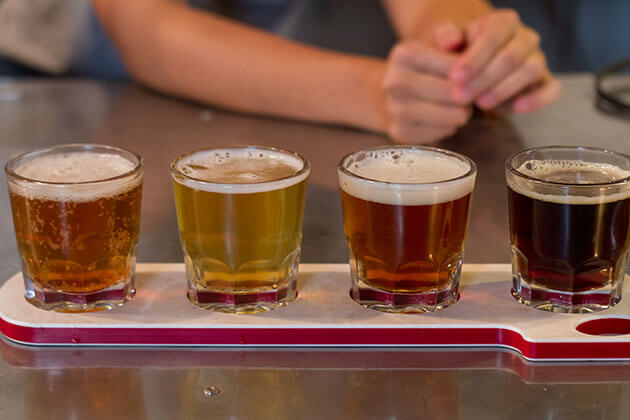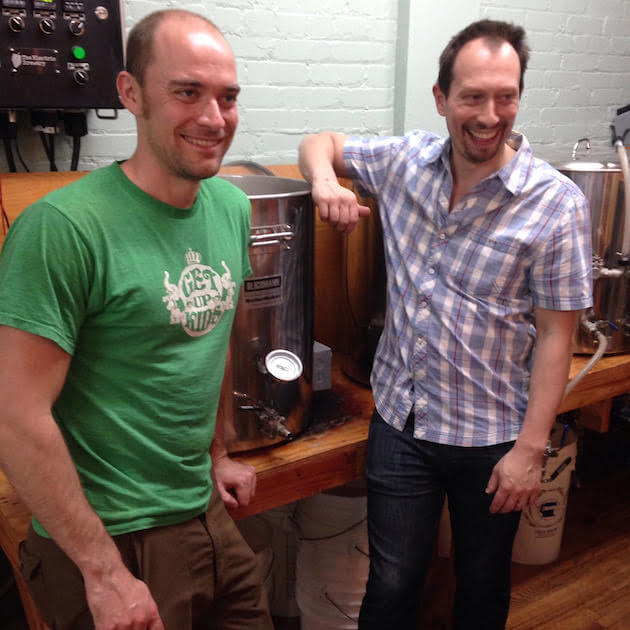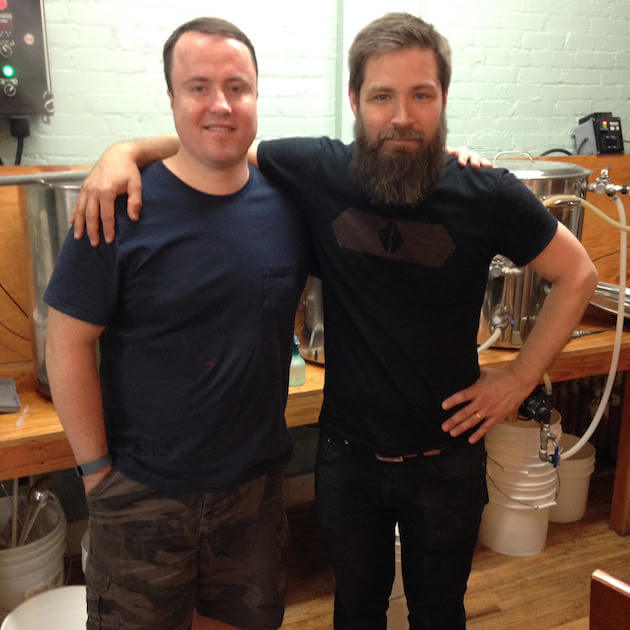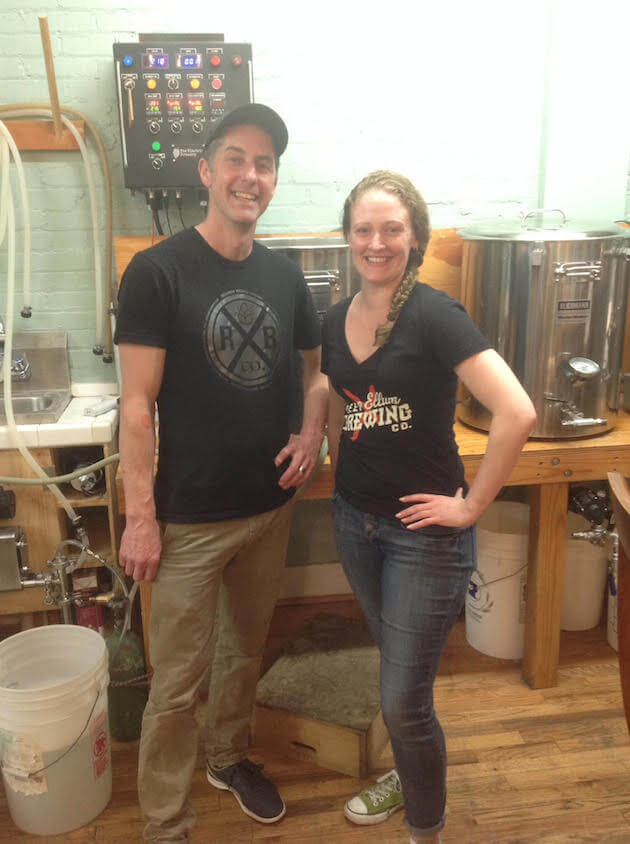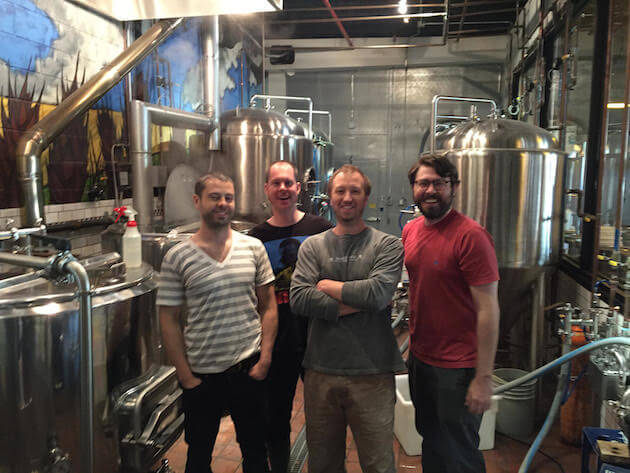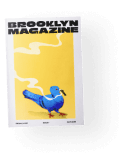The NYC Brewers Pro-Am Returns This Saturday at Covenhoven, 5 New Collaboration Beers Pouring
When the Mack returned in 1996, I was just a naive 12-year-old boy unlearned in the basic principles of Mackism, as taught by a singer from England named Mark Morrison. This was unfortunate: While I was utterly enthralled and inspired to dance-bop by the song’s smoothness, swagger, and unapologetic Macktitude every time I played it on compact disc in my bedroom or in my mother’s Cutlass Supreme, I was unable to fully grasp the profound message—the inherent Mackilosophy—being delivered in lyrics like “So I’m back up in the game / Running things to keep my swing / Lettin’ all the people know / That I’m back to run the show.” (My lack of comprehension was likely only due to Morrison’s indecipherable singing, I now realize. Huh? What’d you say, Mack Daddy?)
That’s history now, though, so let’s shift gears in my Mustang Mack, er, Mach 1 and speed toward an upcoming return this Saturday at Covenhoven: the return of the NYC Brewers Pro-Am (formerly called the NY Pro-Am Brew P.I.T.) event, an exciting chance for homebrewers to join and learn from big-league beermakers and for brewers to return to their amateur roots to impart knowledge and guidance.
The gist: five local homebrewers (Ams) were selected by raffle and paired with a local brewery (Pros) to make a beer, which was later brewed at either the professional’s facility or Bitter & Esters, one of the event’s two organizers and sponsors, using the homebrew shop’s Brew on Premise setup. A total of 15 beers will be served to attendees of its two sessions on Saturday, as each group will pour their collaboration beer alongside one non-Pro-Am brew from both parties. The collaborative-effort showcase, also organized and sponsored by Brew To Share, will double as a competition: attendees will vote for their favorite Pro-Am beer, and the winner will be made and released by the brewery commercially.
We asked the five Ams to describe their respective beers and experiences brewing it with the Pros. As you read below, we recommend playing “Return of the Mack” in the background—or Mackground—for an optimal experience.
Homebrewer: Jason Gers
Collaboration Brewery: Sixpoint
Collaboration Beer: Oily Otter IPA
I’ve been brewing for almost seven years. My buddy Brian Bradley suggested it as something to do to fill the “dude time” void after our 9-ball team folded. We’re still brewing together and now my little brother is in the brew crew too. We make 10-gallon batches and all the spent grains go to my mom’s compost pile on Long Island; my brother uses it to fertilize the hops we grow in her garden. We’ve got over 80 batches under our belt. We’ve labeled every single homebrew bottle cap with the batch number since the beginning. For this competition we took the leap to kegging. I’m really excited and proud of our growth as homebrewers.
I met Marcus Lutter, one of Sixpoint’s brewers, a week ahead of time to tour Sixpoint’s spot in Red Hook, taste some beers (the brewery’s and mine), and formulate a recipe. I had in mind ahead of time that I wanted to do a black IPA, a marriage of the dark, malty beers that I like to make and the hoppy beers that Sixpoint is known for. I shared some of my brew recipes and together we worked on the profile of the beer. I had brewed on Bitter and Esters’ Brew on Premises system before so I was able to calibrate our recipe to hit the right gravity target. We brewed there with the whole team: myself, Marcus, John LaPolla from Bitters, Brian, and my brother Rob.
I wanted the beer black and wanted to truly hit some of those stout notes so for the grain bill we used Marris Otter, Vienna, Midnight Wheat, Biscuit, Chocolate, and Black malts. Marcus had a great idea to take the hop aroma and flavor in a piney, earthy direction to complement the roasty flavors, so we used Warrior, Chinook, Ahtanum and Northern Brewer varieties. We wanted the strength a little over 5 percent ABV but not too strong—the people at the tasting will have a lot of different beers to drink!
One thing I learned from Marcus was that troubleshooting equipment was as much a part of Sixpoint’s brewing process as it is for us at home. In all the years brewing it still seems that at least one thing goes wrong every time. It was refreshing to hear that a professional brewery deals with the same problems and must react with as much spontaneous creativity.
Homebrewer: Simon Tepas
Collaboration Brewery: Other Half Brewing
Collaboration Beer: Third Stone Rye Session Ale
It was a great day when Other Half opened its brewery doors down the street from my apartment in Gowanus. Right off the bat Sam Richardson, Matt Monahan, and the whole crew were offering a full arsenal of high-octane IPAs, a beer style very close to my heart, and I’ve soaked up as much of it as my liver—and two-year-old daughter—have allowed. So I was especially excited to learn that not only had I been picked for this year’s NYC Brewers Pro-Am, but I had been teamed up with none other than the local hop heavyweights.
The recipe I decided to bounce off brewmaster Sam was by no means cutting edge or crazily inventive. It focused on the simple interplay of rye malt with aromatic hops, in a lightly bittered pale base beer. I had brewed something along these lines for my sister’s wedding a couple of years ago and loved the subtle peppery spice from the rye malt, which balanced well with the citrus and tropical hop flavors. From this jumping off point we targeted more of a session-strength beer (sub-5 percent ABV), and Sam tweaked the grain bill to add a little more body and cut out some of the superfluous malts from my homebrew version. And let’s not forget the hops! Of course since I was brewing with Other Half, we ended up nearly tripling the late and dry-hop additions, going for massive tropical fruit with underlying earthy and pine notes. This beer smells amazing!
Designing the recipe and then brewing it with Sam at Bitter & Esters was a great eye-opener for me, not to mention a ton of fun. I’m absolutely psyched to pour this beer at Covenhoven.
Homebrewer: Glen Cupples
Collaboration Brewery: Finback Brewery
Collaboration Beer: The Loneliness of Distant Spice
I was paired with Finback Brewery out in Glendale, Queens, which was exactly what I wanted going in. I originally met the Finback crew at meetings for the Knights of Bruklyn Homebrew Sentry club, which we’re all members of. While I hadn’t been to the brewery, I had had their beers at some meetings and at a few places around town. I really dug what they were doing with their IPAs and saisons (my usual go-to style) so they were my preference when filling out the entry form. Due to crazy schedules all around, setting up a brew day gave us some slight difficulty so we did the next best thing which I actually feel brings a unique twist to the Pro-Am collaboration event: we “tricked out” a beer that Finback was planning on coming out with in the near future. We agreed that our best option was to fruit, spice, or dry hop a beer they had already fermented to create something unique and that would play well with what I was bringing to the event.
First, one of the owners Basil Lee threw out a few beers they had developing in tanks at the moment and we spit-balled ideas for what we could add to them. My first instinct was to add some jalapenos to a beer because a) I knew they’ve done it very well in the past, b) I imagined drinking a quenching sip of my own beer after that heat, and c) they’re one of my favorites foods. I think the challenge with jalapenos is avoiding the vegetal taste and having a restrained spiciness. My first and only attempt at using them in homebrew was a milk stout that I thought would be balanced great with a little bit of heat. But what I ended up with was a beer that reeked of pepper, muddling the flavor of the beer and providing nothing in terms of heat. So I was especially impressed when it was done well by Finback with a delicious witbier the brewery makes named En Verano.
It just so happened that Finback had what I think is a great vehicle for pepper in a kettle-soured nectarine ale [The Loneliness of Distant Space]. It seemed like a no-brainer to bring some mild heat to a tart and fruity brew. I think it’s going to be a nice one-two punch when served next to the beer I made for the event. That’s a slightly fruity and floral, but otherwise clean, Belgian table beer that I’ve been on a quest this last year to perfect, trying to make a really flavorful beer that I could drink with my meals and not feel it.
Homebrewer: Katie Sloan
Collaboration Brewery: Rockaway Brewing
Collaboration Beer: Brangwen Visits Grantchester
I brewed a dark mild beer with Ethan Long, head brewer and founder of Rockaway Brewing Co. When I found out I was brewing with Rockaway, I was very excited. I’m familiar with the brewery, as I live in the neighborhood, and being familiar with them I knew we should lean towards a malt-focused beer. Ethan and I met a couple times to discuss our brew and at our first meeting I came in with three ideas: a “honey BBQ” beer with a touch of smoked malts, a lightly soured Berliner Weiss, and the dark mild. He immediately latched onto the dark mild recipe I had written, and he even told me he had already brewed a lighter mild earlier this year called Kidd X. I found it simple to write a recipe with Ethan; we both value similar characteristics in our beers like complex malt profiles and balanced finishing flavors.
The actual brew day was much easier physically than a typical brew day in my apartment, and I was surprised how the gap between homebrewers and professional brewers is smaller than I originally thought it was in terms of making a recipe. We are both doing the same thing, just on a different scale. Ethan and I brewed on Bitter & Esters’ 15-gallon automated brewing system. Dark mild beers are light on alcohol while still having a depth of malt flavor. It’s a traditional English-style beer. As the style developed over time the alcohol content dropped and it darkened in color. We based our beer off a later iteration of the style, darker and lower on the booze. Our beer will taste of rich dark malts, a little nutty, with some notes of toast and chocolate and a light, earthy, well-rounded bitterness to balance. Easy to drink multiple, but not lacking in flavor. The people will keep coming back for more!
As for the name, it’s a mouthful but Brangwen means dark and pure in Welsh and is also a female English name. And Grantchester is a TV series Ethan used to watch set in England, about detectives meeting in pubs and they are always drinking dark milds while collaborating on solving the case. Both names fit and we combined them for our collaboration.
Homebrewer: Justin Wilson
Collaboration Brewery: Greenpoint Beer & Ale
Collaboration Beer: Acidifus Pie
After hearing that we were paired together, Greenpoint’s brewer Chris Prout and I quickly met at Dirck the Norseman, where the brewery is. We sat down and had a beer and talked about different beer styles and what we both like to brew. I typically make Belgian, sour, and experimental beers and I found that our styles instantly meshed. We ultimately decided to go with an experimental style integrating some of my ideas—I wanted to use rhubarb, a very interesting ingredient from NY history; while technically a vegetable, in 1947 the New York Courts ruled it as a fruit for regulation purposes, since that’s how it’s used—and some of his experience brewing with different grains like spelt, which we decided to feature.
We designed the recipe for Acidifus Pie as a kettle-soured beer made with pilsner, spelt, and rye, all Mosaic hops, with rhubarb added in the boil and fermented with Brettanomyces yeast. I wasn’t familiar with Greenpoint’s system or facility so Chris guided me to where everything was when we met a week later to brew. The biggest difference was everything had a place here. At home when I brew I have my dedicated locations for kettles, but thats usually where I also chop vegetables or make oatmeal. You can get really used to a system like Chris has. It may not be the most spacious setup, but it works for them and you can see how they make it work so effectively.
This was a two-day brew due to the “kettle sour” part, which was done on the first day. Basically we milled the grain, mashed it in using hot water and started the souring process, which consisted of purging the boil kettle with carbon dioxide and introducing bacteria via organic grains. The carbon dioxide keeps the bad bacteria from growing. Two days later we met bright and early to finish. We got started, got the beer boiling, and added the rhubarb. After all was said and done I stayed for a bit to help with their next beer, then I went back to work.
Acidifus Pie will be a light beer, low in alcohol and tart with a strong tropical-fruit hoppiness that is accentuated by frunky-fruity yeast. The goal is that you want to drink a lot of it, and I hope everyone does.
Tickets for this Saturday’s NYC Brewers Pro-Am are available to purchase here.
You might also like 









